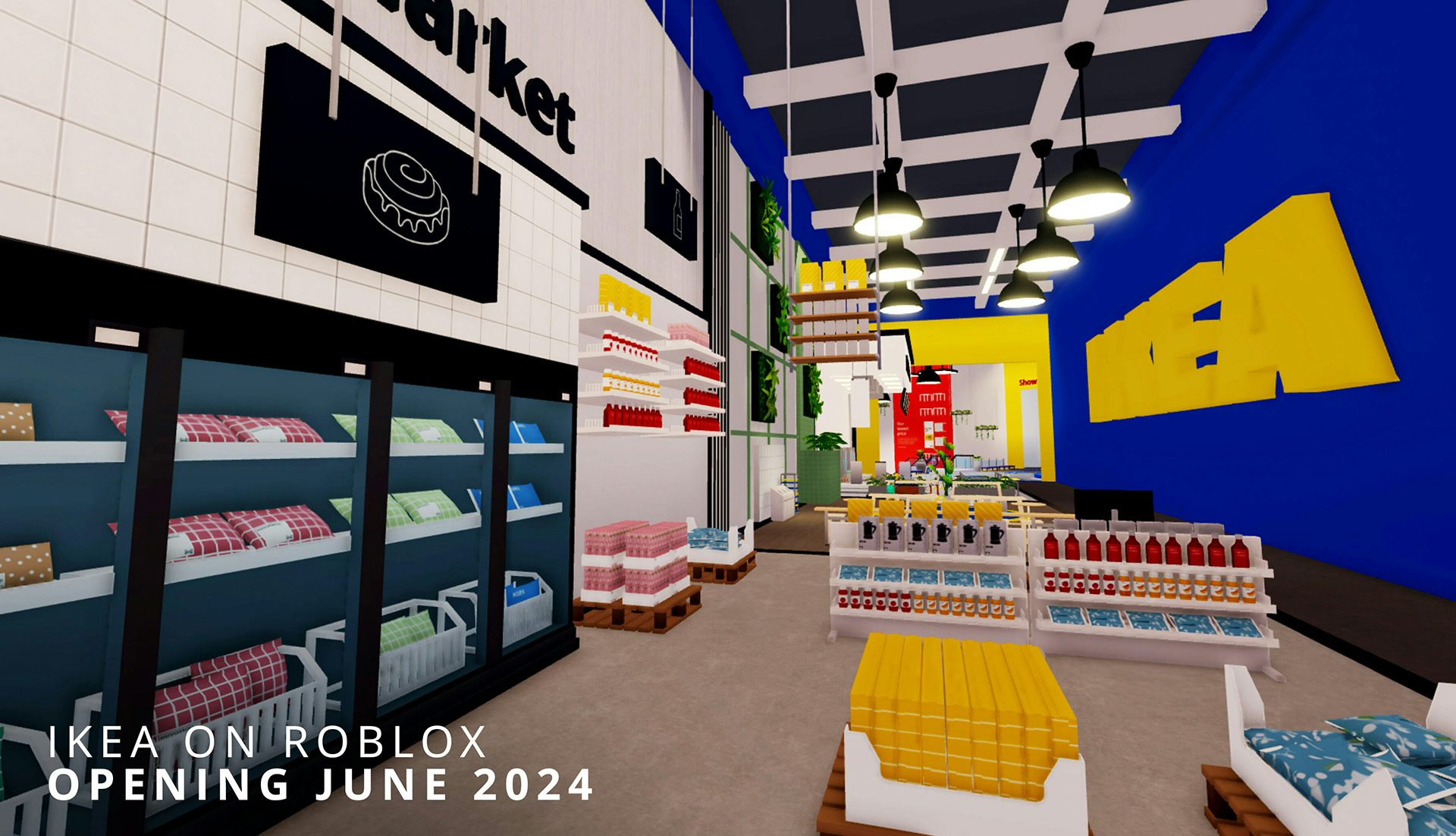How Covid impacted virtual creativity
From gaming to digital fashion to the metaverse, virtual creativity experienced significant growth during the pandemic – and then the world reopened. We look at how creative businesses have dealt with fluctuating demand and what it tells us about tech hype cycles
There was a period during the pandemic when it felt as though everything was on Fortnite or Roblox, Twitch or Discord. These platforms became home to everything from music concerts to theatre productions, runway shows to club nights, brand activations to customer communications. Interest turned to customisable avatars and virtual fashion and beauty. Brands suddenly seemed to care about gaming, which itself kicked into overdrive. Technology innovations that would have once seemed the remit of specialists – the metaverse, NFTs and cryptocurrency – went mainstream. For most, it was completely uncharted terrain.
It is hard to separate the enormous growth of these sectors from the pandemic, when people and companies sought different forms of entertainment and communication under lockdown. This inflated demand stimulated jobs markets, investments, and entire sectors, but as we’ve witnessed, it wasn’t necessarily sustainable. Little by little, the world reopened, and interest waned. While there’s a confluence of factors at play, the growth they experienced three, four, or five years ago has mostly slowed down dramatically or otherwise backtracked.
The global gaming industry experienced double-digit growth between 2017-2021 and swelled to its highest revenues during Covid-19. After that, growth dropped to just 1% the following year, dovetailing with mass layoffs – in 2024, more than 10,000 games industry workers lost their jobs by June – partly attributed to companies overstretching themselves to meet with the surge in demand in lockdown. Of course, nothing exists in a vacuum. A recent report linked the gaming industry’s struggles to factors like rising interest rates. But it also identified a key issue arising from the post-pandemic reality affecting the entire virtual tech sector: that “players [were] heading back to the office and classroom”.
Similar problems appear to have impacted newer sectors. In January, Nike’s closure of Rtfkt – the pandemic-born virtual fashion brand that it acquired in 2021 – came as a warning bell for the digital fashion industry. The industry is closely linked to other unstable sectors, including gaming environments (where many digital fashion pieces appear), NFTs (which people often bought to represent the authenticity of digital fashion pieces), and cryptocurrencies (which people use to pay for NFTs). The latter was deemed to have played a role in Rtfkt’s closure, as well as dwindling community interest. And then there’s the metaverse, perhaps the biggest pandemic-era phenomenon to have dropped off the map.
STANDING START
“In terms of gaming and virtual worlds, I feel like in the first lockdown, brands weren’t mature enough, to be very honest on this one,” says Nikhil Roy, co-founder of Swipe Back, a creative agency that’s worked on traditional advertising as well as virtual and game-based activations for the likes of SNCF, Red Bull, and N26. In his view, a lot of brands wanted to be included in the conversation, without really investing their time or money into it properly. “I think a lot of them were like, ‘we want to do something’ [but] it ended up being a Zoom filter for most of them because they didn’t have the maturity, they didn’t have the knowledge, they didn’t have the budgets.”
Having a captive audience meant that a lot of brands and tech platforms could get away with a sub-par experience – from the uninspired to the glitchy to the downright weird (remember the arrival of Meta’s floating torsos?). The novelty quickly wore off and, compounded by the opening up of the world, interest subsided. A lot of brands and investors inevitably picked up on this, after which many of them upped sticks.
“There was a lot of hype around the metaverse, but unfortunately, the technology was not quite there to elevate it to point where it should have been. The hype felt like it offered false hopes to a lot of people, and so it died down,” says Emma Chiu, global director at VML Intelligence, the agency’s futures and innovations division.
EVOLVING NEEDS POST-PANDEMIC
Chiu also points out that a lot of the tech at the time wasn’t created with a post-pandemic world in mind. “I think the way it had been designed at that time was exclusively to suck someone into the digital world and not lend itself to then have some sort of physical experience afterwards.” As such, applications of ‘phygital’ (a term so clunky it accurately reflects a lot of these hybrid experiences) failed to integrate into a newly reopened world.
“Now we are thinking about how we could leverage technologies such as augmented reality to allow us to have a bit more blur between the physical and digital worlds,” she continues. “I think [immersive tech] served its purpose for the time that it needed to serve its purpose, when people were in lockdown. In order to have a moment of escape, it [meant going] into the digital world. But I think now creatives, businesses, need to start thinking about how they can bring the two worlds together.”
I think even things like the Travis Scott concert in Fortnite – a lot of advertisers realised this is something that’s really relevant. There’s an audience
“I think now we’re trying more and more to bridge the gap between digital experiences and physical ones,” echoes Roy. “I think it’s a big thing. People want to reconnect and just do things [together]. We can have something online obviously, but I think having an additional component to it, I think there’s a big interest.”
It’s a similar story for digital fashion. Experts have pointed out its long-term viability will rely on merging the physical and the digital more cohesively, reflecting the value people still place on material posessions rather than leaning so heavily on the tech alone.
NEW SHOOTS BEGINNING TO GROW
For Roy, there was a lot of low-quality experiences during the pandemic; the most interesting work has come afterwards. “Now I think it’s starting to get in a mature phase,” he says. He has seen first-hand that brands have since taken the time to be more intentional about their digital experiences, rather than just jumping on the bandwagon like they did during the pandemic.
“I think we got a lot of strategic work right after Covid to see how we can change the systems, processes, platforms we use to do advertising. So I think it sparked something that wasn’t there at that point in time,” he says of brands’ changing approaches. The pandemic also made brands wake up to the fact that virtual spaces aren’t niche at all, particularly among younger audiences.
“I think even things like the Travis Scott concert in Fortnite – a lot of advertisers [realised] this is something that’s really relevant. There’s an audience. I think a lot of people, maybe older people, I want to say, that were at home with their kids saw how much time they used to spend in the game just talking to friends, and [they] really started to see there was a third place and not just something to waste time on, basically,” he says.
I don’t think the metaverse is dead, but rather, I think it is continuing its journey as it should be without the marketing hype that surrounds it
Even if the levels of hype have changed, there are signs of long-term viability. Roblox jumped from 115 million monthly active users in February 2020 to over 150 million by July 2020. While that’s a significant leap, the company has actually managed to continue growing the number of users in the years since the pandemic, while large brands are still turning to Roblox for campaigns, signalling an ability to bring together the worlds of virtual entertainment and commerce.
“I don’t think the metaverse is dead, but rather, I think it is continuing its journey as it should be without the marketing hype that surrounds it,” Chiu says. “This is something I’ve talked quite a lot about with people who are creating in this space. They say, look, it’s really early stages. Obviously, people want it to be a fully fledged virtual world that you can do a lot in already, but the technology is not quite there.”
She adds that although innovations like the metaverse blew up during the pandemic, part of a strategist’s role is to help clients see how they can build on that groundwork to find long-term applications, rather than throwing it all away. “So, for example, if you have more creations around virtual worlds, this could then extend into what your ecommerce store looks like. So it’s not something that’s just of that time, it’s something where elements of it can extend into existing products and actually move that forward as well.”

ADAPT TO SURVIVE
While Chiu says anticipating tech trends is about staying in tune with macro forces, the trajectory of the creative tech sector since the pandemic has also been subject to the whims of market forces. One example is Facebook’s rebrand to Meta, so called for its emphasis on metaverse innovations, which it banked on during the pandemic. The social media giant is now hedging its bets on AI, an indicator of how big tech can appear to change its ambitions overnight and dictate interest at scale.
“I guess we need to have the technology, and we need to know that there is investment in the technology being created for it to feel like it can grow and for more people to use it,” Chiu says of how big brands have influenced the creative tech industry. However, she points out that smaller companies are just as important for strategists and trends forecasters. “I would say a lot of startups as well, what they’re doing could be something that gets snapped up by a larger organisation quite easily, and then transformed into something really big. So for us, it’s really important to monitor seeds of innovation that are happening out there that could translate into something bigger.”
In the face of these fluctuating circumstances and ever-changing industry moves, it pays to be nimble. Shifting audience habits and tech sector developments have an impact on brands – but also on the agencies that work with them. Swipe Back has itself gone through multiple pivots. Founded shortly before the pandemic, it quickly became known as a metaverse agency, before introducing a bespoke division specialising in Discord strategies. It is still exploring these technologies, but since 2023, it has been pitched simply as a creative studio, reflecting the changing mood.
“Even though we had the metaverse thing, we had the blockchain thing, we still use [this tech] in different ways. We won’t stop using it,” says Roy. “But I think to get noticed you have to always have this new thing – which is kind of sad.” He says it’s simply “the state of things”. “We’ve basically been doing the same thing [all this time], you just keep repackaging it in terms of buzzwords, always just [addressing] the brand-new thing, the shiny thing, to get work in, to get noticed. But in terms of our daily work and how we function, it’s always been the same thing. What’s a good strategy? What’s a good idea? Where’s the best place to execute it, and how can you do it with as much as care as you can?”
vml.com; swipeback.studio; Top image: Shutterstock/RomanYa




